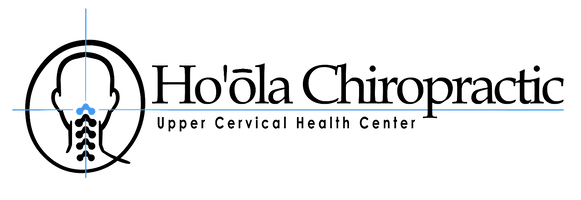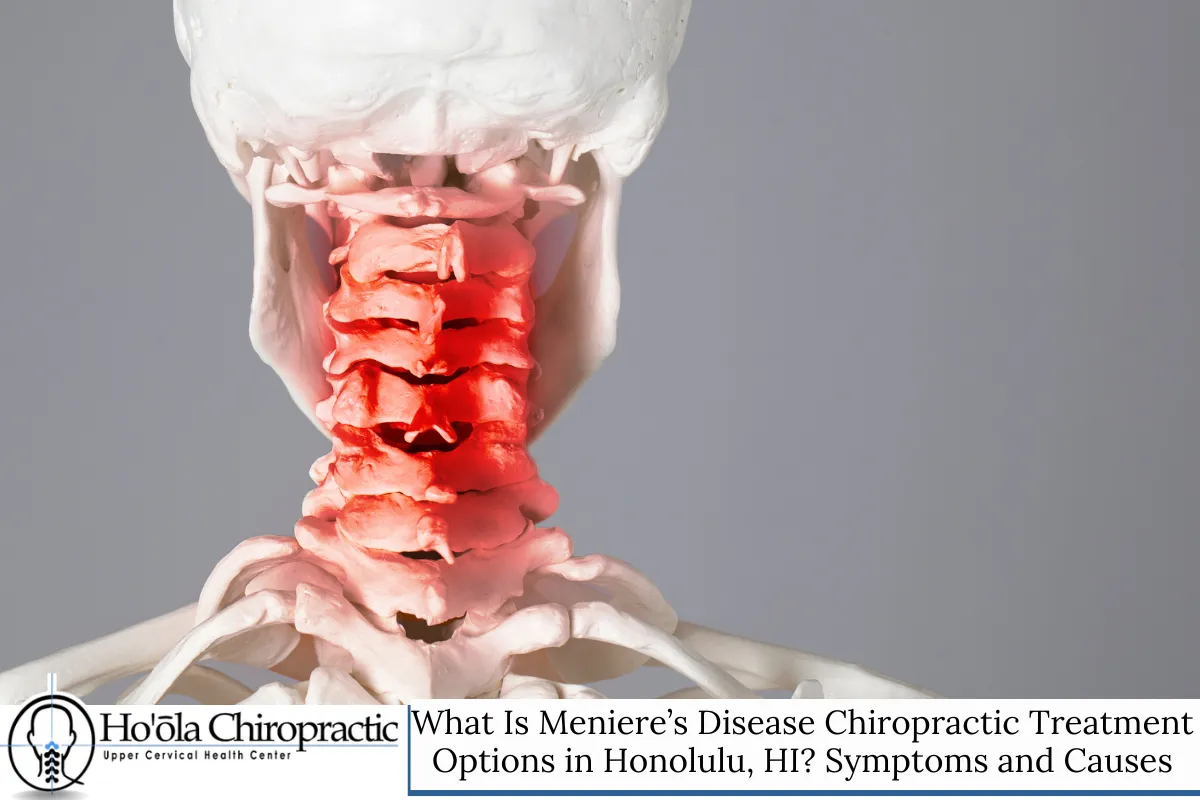How Chiropractic Care May Support Those With Meniere’s Disease in Honolulu
Living with Meniere’s disease can be incredibly challenging, especially if you’re in Honolulu and searching for natural ways to manage your symptoms. Meniere’s disease chiropractic treatment in Honolulu, HI, is an emerging option for those experiencing recurring episodes of vertigo, hearing loss, and ringing in the ear. This inner ear disorder often leads to a sense of helplessness as symptoms interfere with daily activities. The unpredictability of vertigo, aural fullness, and fluid buildup can agitate every aspect of your life, causing distress and uncertainty about the future. If you are struggling with dizziness, nausea, and hearing loss—and traditional treatments are not bringing relief—there is hope. Many people are now exploring chiropractic care, especially upper cervical chiropractic, as a holistic solution to address the root causes of their symptoms. This article explores the science, options, and unique benefits of chiropractic adjustment for Meniere’s disease, focusing on how this approach could help restore your well-being.
Meniere’s Disease Explained: Symptoms, Progression, and Impact on Daily Life
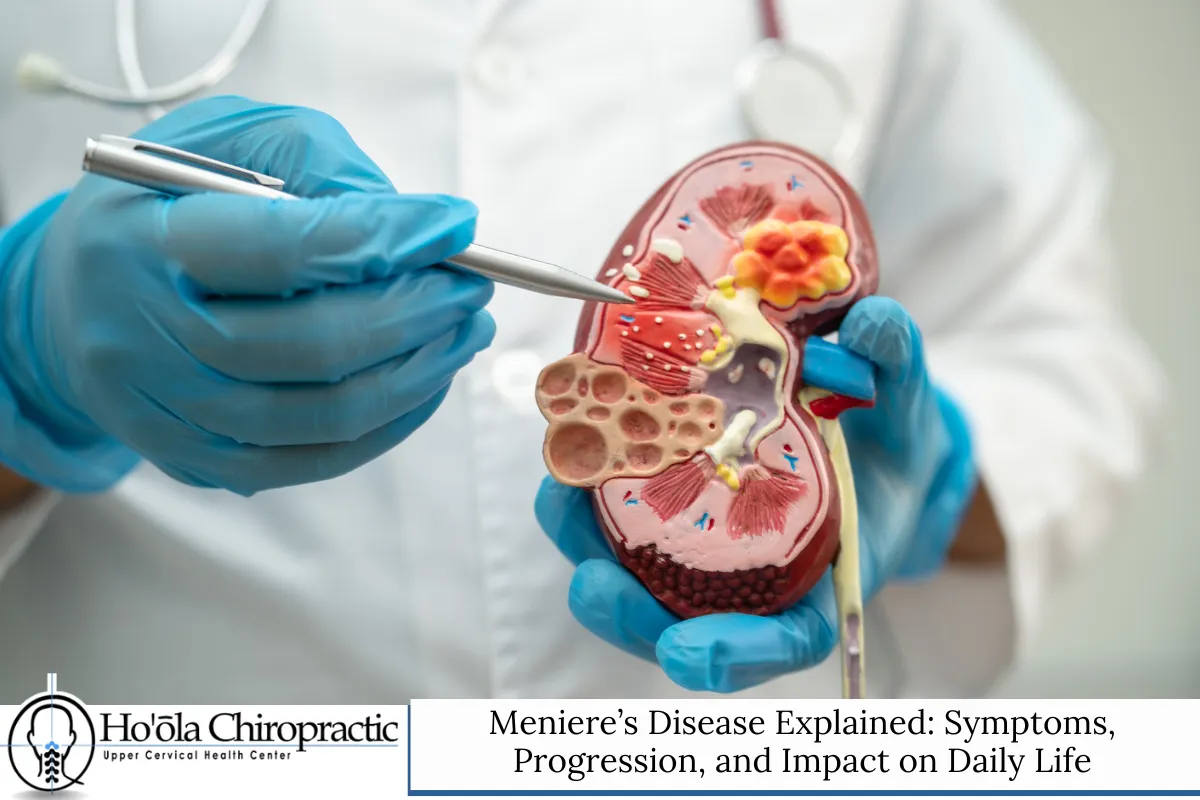
The Complexity of Inner Ear Disorders
Meniere’s disease is a chronic and often progressive inner ear disorder that affects the endolymphatic system. It typically causes unpredictable bouts of vertigo, fluctuating hearing loss, tinnitus (ringing in the ear), and a feeling of aural fullness. The root problem involves fluid retention and endolymph buildup within the semicircular canals of the inner ear, resulting in an imbalance in the vestibular system.
Common Symptoms
- Recurring vertigo (sensation of spinning)
- Hearing loss (often fluctuating and affecting one ear)
- Ringing in the ear (tinnitus)
- Aural fullness (pressure or congestion in the ear)
- Nausea and vomiting (from severe vertigo)
- Brain fog or confusion during episodes
These symptoms can range from mild to disabling and often come in unpredictable attacks. Over time, hearing loss may become permanent, and persistent vertigo can lead to anxiety or even depression.
Progression and Stages
Meniere’s disease can evolve through different stages:
- Early Stage: Sudden and unpredictable vertigo episodes, hearing loss that returns to normal between attacks.
- Intermediate Stage: More frequent hearing loss, ringing in the ear, and balance problems.
- Late Stage: Less vertigo but increasing, often permanent, hearing loss and balance difficulties.
Some individuals may also experience other neurological signs, such as muscle pain, cervicogenic headache, or symptoms related to cervical spine misalignment.
Causes of Meniere’s Disease: Theories and Contributing Factors
Fluid Buildup and Endolymphatic Hydrops
Most experts believe that the root cause of Meniere’s disease is abnormal fluid buildup (endolymphatic hydrops) in the inner ear. This can disrupt the normal functioning of the vestibular and auditory systems, leading to the hallmark symptoms.
Contributing Factors
- Impaired fluid drainage due to anatomical blockages or dysfunction of the eustachian tube.
- Abnormal immune system response affecting the endolymphatic system.
- Genetic predisposition or family history.
- Cervical trauma or vertebral subluxation, affecting the nervous system and blood flow to the inner ear.
- Infections, such as viral or bacterial ear infection, leading to inflammation.
- Stress and dietary changes, including high salt intake that affects fluid balance.
Other suspected factors include vasogenic edema, autoimmune issues, and even temporomandibular joint problems, all of which can contribute to the complexity of this inner ear disorder.
The Role of Chiropractic Care in Meniere’s Disease Management
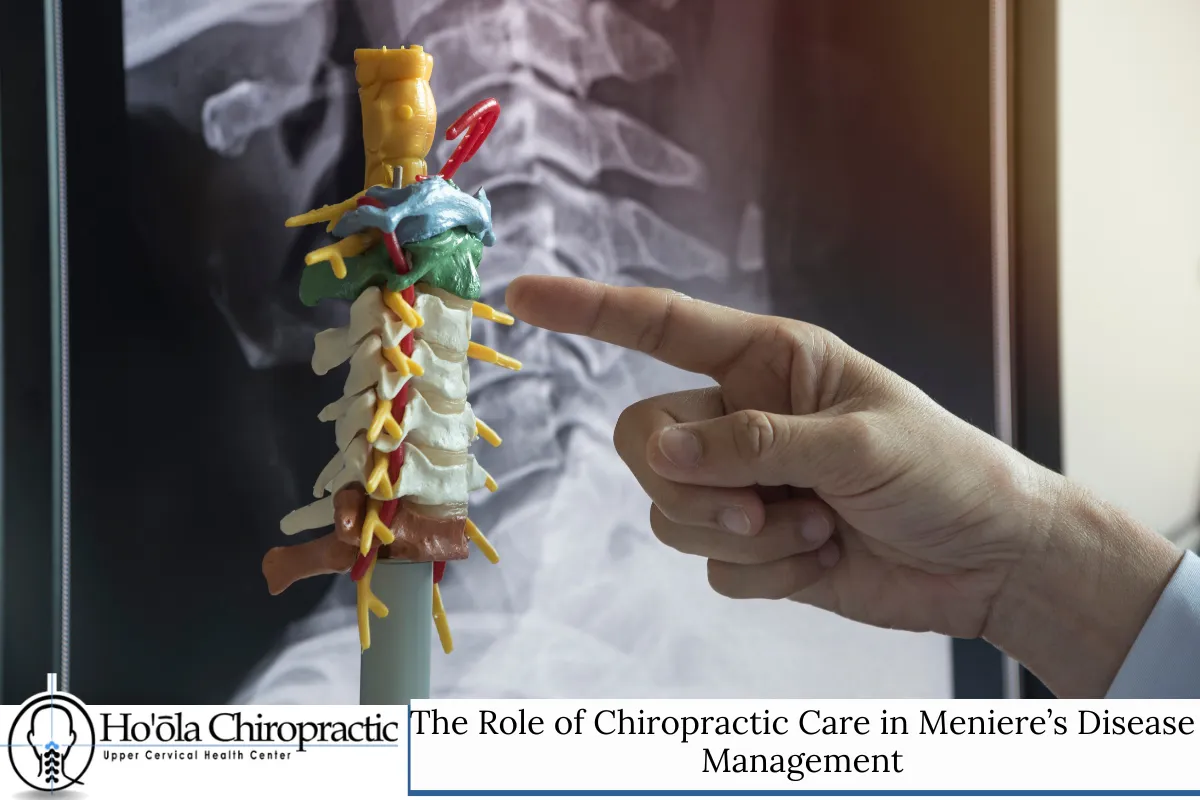
Exploring Upper Cervical Chiropractic Care
Upper cervical chiropractic care has become a sought-after approach for those seeking natural relief from Meniere’s disease. This specialized form of chiropractic treatment focuses on correcting misalignments in the upper cervical spine—specifically the atlas (C1) and axis (C2) vertebrae—right at the craniocervical junction. These vertebrae are critical to the normal function of the nervous system, brain stem, and the flow of cerebrospinal fluid.
Why Upper Cervical Chiropractic?
- Restores spinal alignment and corrects vertebral subluxation
- Reduces nerve interference and improves neurological function
- Improves blood flow and fluid drainage in the inner ear
- May alleviate symptoms such as vertigo, tinnitus, and hearing loss
Upper cervical chiropractors use advanced diagnostic tools like digital x-rays, cervical spine radiographs, and sometimes MRI scans to pinpoint spinal misalignments. By focusing on gentle, precise chiropractic adjustment, upper cervical chiropractic aims to restore normal nerve function and promote healing in the inner ear.
Key Benefits of Chiropractic Treatment for Meniere’s Disease
Non-Invasive, Drug-Free Relief
For many, chiropractic treatment represents a drug-free, non-surgical alternative for managing Meniere’s disease. By correcting misalignments in the upper cervical spine, this approach can help relieve pressure on the cranial nerves, improve cerebrospinal fluid dynamics, and restore proper function of the vestibular nucleus and vestibulocochlear nerve.
Unique Techniques Used
- Blair upper cervical technique for precise alignment
- Torque release technique for gentle, non-invasive correction
- Spinal manipulation and spinal adjustments for overall back health
- Soft-tissue trigger-point therapy to relieve muscle pain and cervicogenic headache
- Cervical spine rehabilitation exercises to improve long-term spinal health
Diagnostic Tools and Assessments Used by Chiropractors
Comprehensive Evaluation for Individualized Care
A doctor of chiropractic will conduct a detailed assessment, including a neurological exam, review of symptoms, and advanced imaging such as digital x-rays, MRI scans, and blood work (to rule out infection or immune system issues). These diagnostic tools help determine the presence of vertebral subluxation, spinal misalignments, and fluid retention affecting the inner ear.
What to Expect During Your Consultation
- Medical history review including past cervical trauma and ear infection
- Physical and neurological exams
- Cervical spine and cranial imaging
- Assessment of spinal cord and vertebral artery function
- Audiological tests such as auditory brain stem response
Chiropractic Treatment Options for Meniere’s Disease in Honolulu
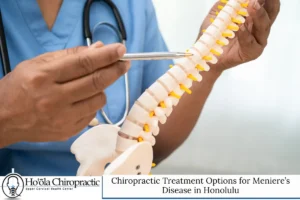
Upper Cervical Chiropractic and Precision-Based Spinal Correction
Upper cervical chiropractic care is distinguished by its focus on the atlas vertebrae (C1) and axis (C2) at the top of the cervical spine. Misalignment in these critical joints can affect the central nervous system, restrict cerebrospinal fluid movement, and compromise the function of the vestibular system. Honolulu chiropractors with upper cervical expertise use specialized techniques to gently adjust the upper cervical spine, aiming to restore proper spinal alignment and nerve communication.
Common Techniques and What They Address
- Blair upper cervical technique: Targets precise realignment of C1 and C2, improving blood flow and reducing pressure on the brain stem and cranial nerves.
- Torque release technique: Utilizes a gentle, instrument-assisted approach for correcting vertebral subluxation without twisting or cracking.
- Spinal adjustments: Focused not just on the cervical spine but also addressing full spinal health, which can impact neurological function and body balance.
- Soft-tissue trigger-point therapy: Relieves muscle pain, tension, and cervicogenic headache that can accompany vestibular problems.
How Spinal Misalignments Affect Meniere’s Disease
- Disruption of cerebrospinal fluid flow leads to increased fluid buildup or endolymphatic hydrops in the inner ear.
- Impaired communication in the brain stem, vestibular nucleus, and cranial nerves affects the body’s ability to manage fluid balance.
- Vertebral artery and blood flow changes reduce the delivery of oxygen and nutrients to the endolymphatic system.
Upper cervical chiropractors often use digital x-rays, cervical spine radiographs, and sometimes MRI scans to identify misalignments and plan the most effective spinal correction for each patient.
Vestibular Rehabilitation and Physical Therapy Integration
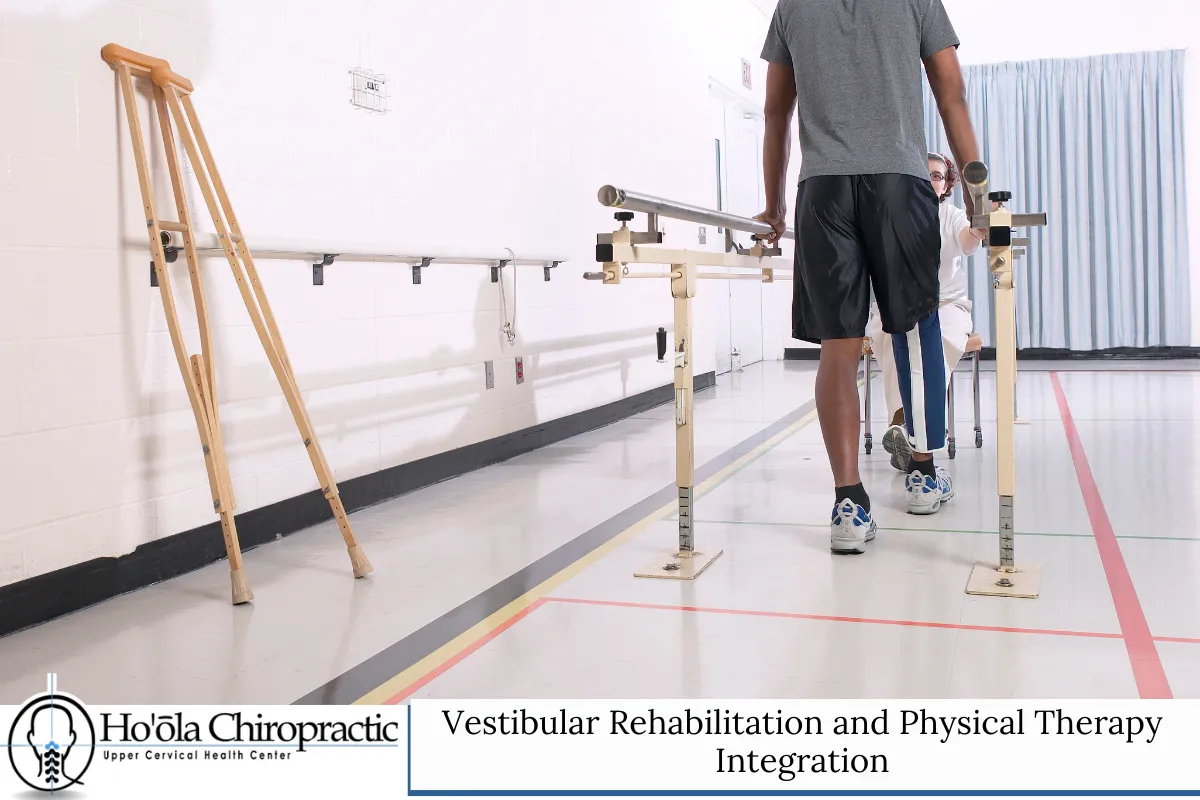
A comprehensive treatment plan may also incorporate physical therapy and vestibular rehabilitation exercises. These strategies support chiropractic adjustments by retraining the body’s balance systems, improving gait stability, and reducing the frequency and intensity of vertigo episodes.
Examples of Vestibular Rehabilitation Therapies
- Balance retraining: Exercises to strengthen the vestibular system and reduce fall risk.
- Epley maneuver: Often used for benign paroxysmal positional vertigo but sometimes helpful for secondary vestibular dysfunction.
- Cervical spine rehabilitation exercises: Improve range of motion, muscle coordination, and cervical alignment.
- Trigger point release: Addresses tension in neck and upper back muscles, promoting relaxation and better blood flow.
Your doctor of chiropractic may collaborate with physical therapists or recommend at-home exercises as part of your ongoing care.
Supporting Recovery: Lifestyle and Dietary Changes for Better Outcomes
Chiropractic care is most effective when combined with healthy lifestyle modifications tailored to reduce triggers of Meniere’s disease and promote overall wellness.
Key Recommendations for Patients
- Dietary changes: Reduce sodium intake to help control fluid retention and inner ear pressure.
- Hydration: Maintain optimal fluid balance in body fluids to avoid sudden shifts in endolymph buildup.
- Avoid caffeine and alcohol: These can disrupt fluid balance and increase aural fullness or vertigo.
- Manage stress: Chronic stress can worsen vestibular symptoms and impact the immune system. Mindfulness, gentle yoga, and relaxation techniques are recommended.
- Address cervical trauma: Old injuries to the neck or craniocervical junction can contribute to spinal misalignments and symptom flare-ups.
Regular follow-ups with your health care provider, periodic neurological exams, and maintenance chiropractic adjustments can help monitor progress and adjust the treatment plan as needed.
Advanced Treatment Options and Integrative Medical Care
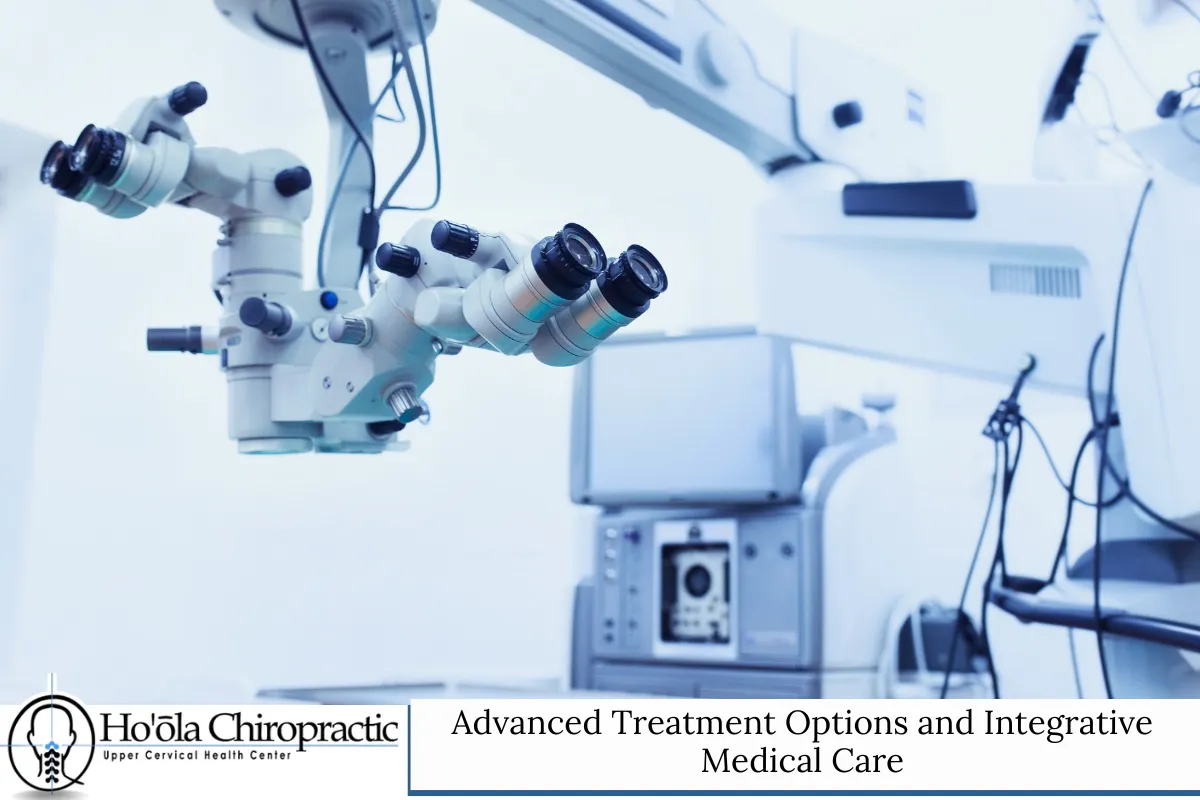
When to Consider Medical or Surgical Intervention
In some cases, chiropractic treatment alone may not fully resolve symptoms, and patients may require additional medical care. It’s important to have a collaborative approach, working closely with medical doctors, audiologists, and other specialists when necessary.
Medical Options for Severe or Persistent Symptoms
- Steroid injections: May reduce inner ear inflammation and fluid retention.
- Hearing aid: Beneficial for those with ongoing hearing loss.
- Surgical shunts or ventilation tubes: Help drain excess fluid from the inner ear in severe cases.
- Drug injection equipment: Sometimes used to deliver medication directly to the inner ear.
Patients may also undergo MRI scans, blood tests, or auditory brain stem response testing to rule out other neurological causes or monitor disease progression.
The Role of Regular Monitoring and Prevention Strategies
Long-term management of Meniere’s disease requires a focus on prevention strategies to minimize attacks and slow progression to a more severe stage.
Preventative Steps
- Ongoing chiropractic adjustments for spinal health and upper cervical care.
- Routine blood pressure and blood work checks to monitor overall health.
- Immune system support through proper nutrition and supplementation, such as vitamin B-12 if recommended by your provider.
- Avoiding known triggers, including certain foods, allergens, and environmental stressors.
A health care provider may also recommend lifestyle counseling or periodic neurological function reviews to help patients maintain healthy lives and adapt as needed.
What to Expect from Upper Cervical Chiropractic Care in Honolulu
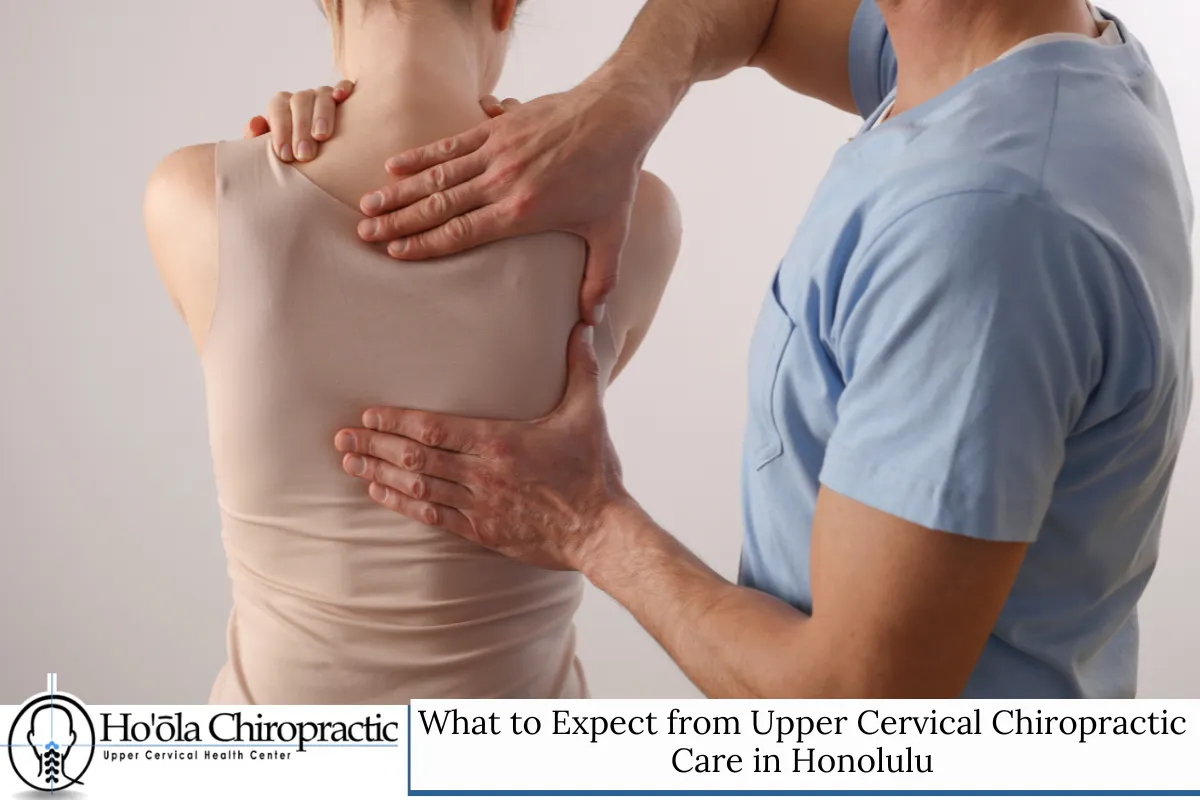
Your First Appointment and Beyond
Visiting an upper cervical chiropractor in Honolulu typically begins with a detailed consultation, including a review of your medical history, symptoms, and any past cervical trauma or head injuries. Advanced imaging—such as digital x-rays or cervical spine radiographs—helps identify spinal misalignments or nerve interference impacting the vestibulocochlear nerve or other cranial nerves.
Typical Steps in the Care Process
- Initial neurological exam: Assesses cranial nerve function, hearing, balance, and any signs of trigeminal neuralgia or cervicogenic headache.
- Imaging and analysis: Identifies misalignments at the atlas (C1), axis (C2), and C2-3 joint, as well as potential vertebrobasilar insufficiency.
- Personalized treatment plan: Outlines the frequency and type of chiropractic adjustments, supportive therapies, and home care recommendations.
- Progress monitoring: Periodic re-evaluations using imaging and symptom tracking to ensure optimal outcomes.
Patients often report improvements in vertigo, brain fog, and aural fullness within several weeks of starting upper cervical chiropractic care. However, consistency and regular follow-up are key to achieving lasting relief.
Meniere's Disease Chiropractic in Honolulu, Hawaii — Ho'ola Chiropractic
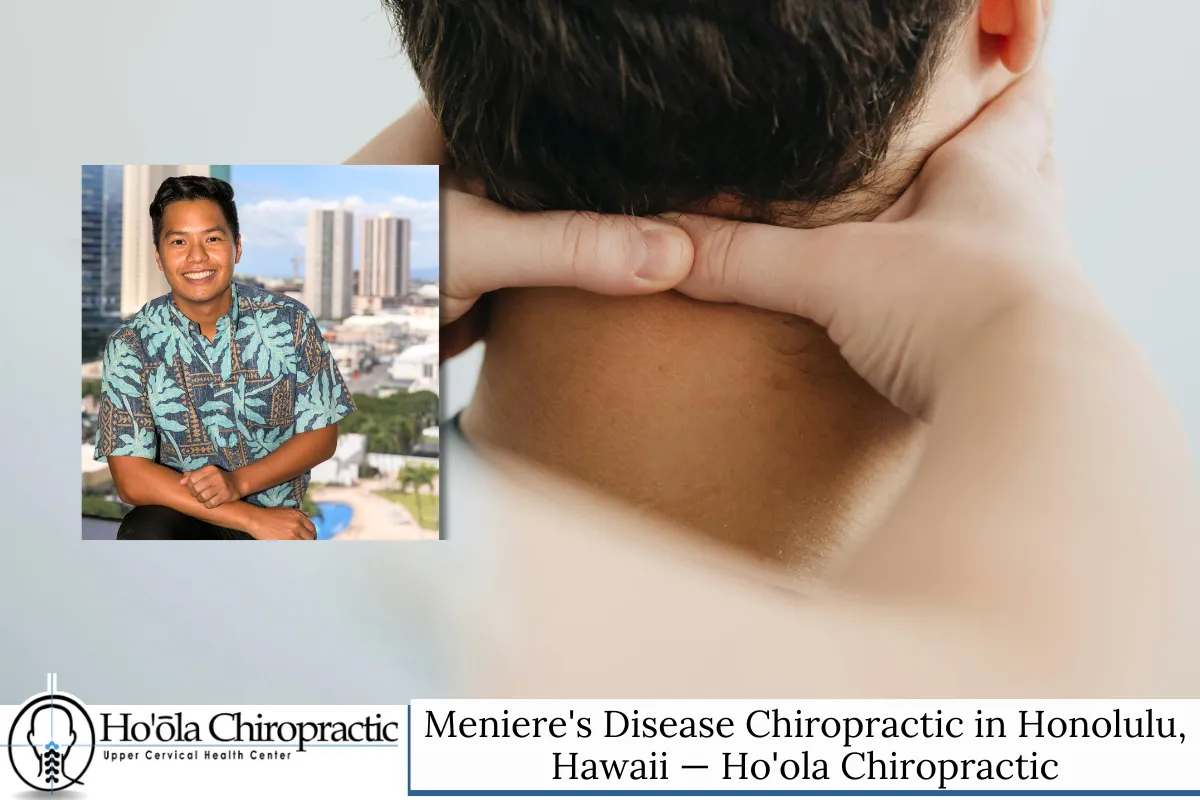
If you’re seeking expert meniere's disease chiropractic care in Honolulu, Ho'ola Chiropractic is here for you. Our experienced team specializes in gentle, upper cervical chiropractic adjustments to help restore balance, reduce vertigo, and improve your quality of life. We understand the challenges of living with Meniere’s disease and are committed to providing compassionate, personalized treatment options that target the root causes of your symptoms. Conveniently located in Honolulu and serving the surrounding areas, we offer advanced diagnostics and a holistic approach to your wellness. Don’t wait—call Ho'ola Chiropractic at (808) 772-8284 or fill out our easy online contact form today. Take the first step toward natural relief and a healthier, more balanced life.
Frequently Asked Questions
1. How can upper cervical chiropractic care help people with Meniere’s disease?
Upper cervical chiropractic care focuses on correcting misalignments in the top two vertebrae of the neck (atlas and axis). Research has shown that misalignments in this area can disrupt nerve function and cerebrospinal fluid flow, contributing to inner ear disorders like Meniere’s disease. By gently realigning the cervical spine, an upper cervical chiropractor helps restore normal nerve communication and blood flow, potentially reducing symptoms like vertigo, hearing loss, and ringing in the ear. Many patients report improvements in dizziness and balance, especially when other treatments have failed. While not a cure, chiropractic care can be a valuable part of a comprehensive approach to managing Meniere’s disease and improving overall well-being.
2. What should I expect during my first meniere’s disease chiropractic appointment?
During your initial visit at Ho'ola Chiropractic, your chiropractor will take a thorough medical history and discuss your symptoms, focusing on your episodes of vertigo, aural fullness, hearing loss, and any cervical trauma. Advanced imaging, such as digital x-rays or cervical spine radiographs, may be used to identify upper cervical misalignments. You’ll also undergo a detailed neurological exam to assess nerve function and balance. Based on these findings, the chiropractor will develop a personalized treatment plan that may include gentle chiropractic adjustments, spinal rehabilitation exercises, and recommendations for lifestyle changes. The goal is to address the root causes of your symptoms and monitor your progress over time.
3. Are chiropractic adjustments safe for people with Meniere’s disease?
Chiropractic adjustments, especially upper cervical techniques, are considered safe when performed by a trained, licensed doctor of chiropractic. Techniques like the Blair upper cervical or torque release method are very gentle, avoiding forceful manipulation. At Ho'ola Chiropractic, safety is our priority—we use detailed assessments, imaging, and modern, non-invasive methods. There are rare risks, such as mild soreness after treatment, but most patients tolerate the care well. If you have other medical conditions, your chiropractor will coordinate with your health care provider to ensure a safe, effective treatment plan tailored to your needs.
4. How long does it take to see results from chiropractic care for Meniere’s disease?
The timeline for improvement varies. Some people feel better after just a few adjustments, noticing reduced vertigo and clearer thinking, while others need several weeks of care to experience significant change. Factors such as the severity of your condition, duration of symptoms, and overall spinal health influence results. Consistency with appointments, following your treatment plan, and making recommended lifestyle changes (like dietary adjustments and stress management) will support the best outcomes. At Ho'ola Chiropractic, we track your progress at each visit, making adjustments to your care as needed for steady improvement.
5. Can chiropractic care work alongside other Meniere’s disease treatments?
Yes, chiropractic care can be a valuable complement to other medical treatments for Meniere’s disease. Many patients continue to use medications, hearing aids, or vestibular rehabilitation exercises while receiving chiropractic adjustments. The holistic, non-invasive approach of chiropractic care aims to enhance your body’s natural healing and support the effectiveness of your overall treatment plan. Our team at Ho'ola Chiropractic communicates with your health care provider as needed, ensuring a safe and coordinated approach that keeps your unique needs and goals in mind. Always consult with your primary doctor before making significant changes to your medical routine.
Read Can Meniere’s Disease Chiropractic Treatments in Honolulu, Hawaii Improve Your Symptoms?
When to See a Chiropractor for Disc-Related Back Pain in Palolo, Honolulu, Hawaii
